Nokia Lumia 1520 Review
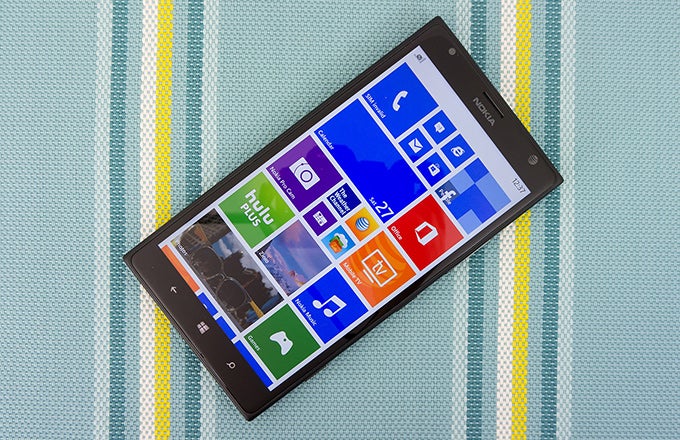
Introduction
Taking a gamble with Microsoft's Windows Phone platform, Finnish company Nokia has been trying extensively to perfect its lineup of Lumia devices for the last couple of years. In complementing the mobile experience, the Luima lineup of Windows Phones have remained very distinctive in the space, thanks partly to their stylish looking designs – and most recently, they've been known to be great snappers too! Try as they might, it's apparent that these high-end Lumias have been overshadowed by beefy spec'd Android smartphones.
Well, that's all about to change! Generally speaking, Windows Phones have been regarded as being underpowered in comparison to those noise makers in the Android space. This past fall, the Nokia Lumia 1020 became the loudest Windows Phone to arrive on the scene – much in part to its favorable high-end specs and impressive PureView camera. Even though it continues to claim the top spot when it comes to camera quality, the phone as a whole, still didn't have the impressive hardware that would make it a modernized offering to compete with the elites.
Enter the Nokia Lumia 1520, the biggest and most specs heavy Windows Phone to arrive ever! This one isn't messing around at all, since it's sporting the latest hardware gear, and Windows Phone 8 experience, to give the competition something to worry about. Interestingly, we haven't necessarily seen a phablet type Windows Phone, so it's refreshing to see that we finally have one here. With everything in tow, it's looking like the Lumia 1520 has all the ingredients to be a mighty force in the industry – especially when it's attached with an aggressive price point of $99.99 on-contract.
The package contains:
- Wall charger
- microUSB cable
- Getting started guide
- Warranty information
- SIM removal tool
Design
Essentially, the smartphone resembles the Lumia 1020 before it – a stretched out version of that. Distinctively a Lumia smartphone, seeing that it boasts most of the typical design characteristics that have been attached to the popular smartphone line, we can’t say that the design of the Lumia 1520 is particularly original. Nevertheless, it continues to be an appealing one, since its rounded edges and tapered design both lend to mask its rather boxy look.
Obviously, this is a big phone! And by big, we mean ridiculously big, mainly because it dwarves most other phablets. Therefore, it’s something that proves to be unwieldy for those with smaller hands, as its wide figure is undoubtedly a handful – thus, requiring two-handed operation. In addition, the corners of the phone are rather pointy, to the point that it jabs our palm when holding it. At the very least, we’re comforted to find that it sports a pretty thin 0.34-inch profile, and for the most part, it’s pretty uniform looking throughout its body.
Being a high-end Lumia smartphone, the 1520 benefits by having a solid unibody polycarbonate plastic casing – giving it a sense of sturdiness with its construction. With our specific unit, it’s a black matte finish that does a good job of masking debris. Well, the white and yellow versions of the phone also sport the matte finish, but the red color is actually coated with a glossy finish – making it more prone to smudges and fingerprints. In the phablet space, the Nokia Lumia 1520 is unique looking and definitely comes across as more interesting in design than most others.
Beneath that massive display sits the usual trio of capacitive Windows buttons, but for something so large, they appear somewhat disproportionate in size. Well, at least the spacing between them is enough to eliminate accidental presses. Meanwhile, above the display, we find its narrow earpiece, light & proximity sensors, and its wide-angle front-facing 1.2-megapixel camera.
As the standard formula goes, the right edge of the phone packs in all of the handset’s physical buttons, which consist of its power, volume, and shutter keys. Unfortunately, they’re all rather flat, making them difficult to feel out with our fingers, but at least the response is solid with all of them.
On the left edge, the engineers over at Nokia manage to discretely hide away the handset’s nano SIM and microSD card slots, as it blends into the phone. However, we’re required to use the included SIM removal tool to access both of them. Now, it makes perfect sense with the nano SIM slot, but we would’ve preferred having some kind of spring activated system for the microSD card slot. Rounding things out, the Lumia 1520 features a 3.5mm headset jack, microUSB port, and FOUR Stereo High Amplitude Audio Capture (HAAC) micrphones.
Unlike the Lumia 1020, there isn’t a huge ugly looking hump in the rear where the camera normally sits. Although there’s still a hump, it’s more subdued, which allows the handset to sport a uniform profile for the most part. At the center of it all sits a 20-megapixel PureView camera that features 6-element Zeiss lens, f/2.4 aperture, lossless zoom, optical image stabilization, and a dual-LED flash.
Display
It’s a first of a kind, in the Windows Phone camp, that is. The handset gets the prestigious recognition of being the first Windows Phone smartphone to feature a 1080x1920 display. And boy is it gigantic, the largest sized display to grace a Nokia smartphone ever! To be exact, it’s flaunting a gorgeous looking 6-inch 1080 x 1920 IPS LCD panel – giving it a sharp pixel density count of 368 ppi. Honestly, this has been a long time coming, as Windows Phone has been constantly downplayed for the lack of devices with 1080p resolution screens. Needless to say, 1080p screens are nothing new in the smartphone space, but we’re just ecstatic to find it here on a Windows Phone. Naturally, it produces a ton of sharp details, to make even the most miniscule of text easily visible to the eyes.
And seeing that it employs IPS LCD technology, it boasts natural looking colors, wide viewing angles, strong contrast, and a potent brightness output. All of those qualities enable it to offer superior outdoor visibility, so there’s no need to be constantly shielding it away from the sun. Interestingly, there’s an option to manually adjust screen color temperature and saturation on the Lumia 1520. You can pick overblown colors that look unreal yet impressive, or you can go for a more realistic, natural tones (that we would recommend). All told, it’s without question the best display to ever grace a Windows Phone!
Nokia Lumia 1520 360-Degrees View
Interface and Functionality
It surely must be awesome being a Windows Phone with many first in its package. In the software side, the Nokia Lumia 1520 is running the most up-to-date version of Microsoft’s always evolving mobile platform – Windows Phone 8 with the GDR3 update. Now it doesn’t have the same drastic changes we see on other rival platforms of late (think iOS 7 and Android 4.4 KitKat), but regardless of that, it’s filled with a handful of new features and enhancements to make it seem that the platform is keeping a good pace with its development.
Thanks in part to its massive 6-inch 1080p display, the start screen is now able to accommodate up to six live tiles in a horizontal row – the smallest sized live tile option, that is. Besides that, the look and feel of the platform remains largely unchanged. It’s not a bad thing per se, seeing that the start screen continues to catch our attention with its animated presentation.
Out of all the mobile platforms out there, the Windows Phone 8 notification system is still messy – and that’s despite seeing a subtle enhancement here with the GDR3 update. Rather than having a centralized place where we can view them simultaneously, they’re largely handled by the start screen’s respective live tiles, which can be disorganizing as we’re trove through each one.
As for the multi-tasking experience, the GDR3 update now provides us with the ability to close apps by tapping on the “x” above each window in the multitasking view. However, it would’ve been better if there were an option to close several or all at the same time.
Don’t get us wrong, we are glad to see the most up-to-date version of Windows Phone here. Update 3 adds a lot of small improvements like custom notification tones, rotation lock, and a new Driving mode. To the untrained eye, though, it’s hard to see any difference between this latest version and earlier Windows Phone 8 versions. The more we look at it, we begin to see some of the platform’s limitations in comparison to its rivals. It’s flashy, animated, and has an appealing presentation, but it requires deeper functions with the core experience to appease power users.
Messaging
Armed with that gigantic display, we’re greeted with the most spacious keyboard layout to ever hit a Windows Phone smartphone. In tow as always, is the responsiveness and killer auto-correct feature that’s always a staple with the keyboard. Alternatively, if you’re not about typing with your thumbs, its voice dictation service works rather well too.
Even with the updated experience, there’s nothing added to the email experience. Despite that, we can’t complain because it gets the job done by giving us a good balance between organization and productivity.
Organizer
We like the selection of first-party apps on Windows Phone. Having mobile Office right out of the box is a huge plus. Since this is a Nokia phone, you also get some very neat applications that other Windows Phone handsets do not have. Nokia Drive with free offline turn-by-turn navigation and Nokia Music with its great free music streaming option are on board.
Basic functionality is also well covered with a phone app that integrates your social news circles (Facebook and Twitter) and contacts. Although its set of core organizer apps are more than usable, the platform is seriously lacking a contender in the digital personal assistance service category. Relying on its Bing service, it’s able to do basic things like making phone calls, sending text, opening apps, and much more. However, it lacks the smarter features of its rivals – like being able to perform calculations, conversions, and even answering who is the president of the US.
Processor and Memory
Finally!! Windows Phone ushers in a whole new era, as the Nokia Lumia 1520 is packing serious heat under the hood, to put it in the same light as its high-end Android counterparts. Sure to appease those specs conscious folks, the handset features a mighty quad-core 2.2GHz Qualcomm Snapdragon 800 SoC, featuring the Adreno 330 GPU, coupled with 2GB of RAM.
A constant staple of the platform, it doesn’t surprise us that the Lumia 1520 is snappy and responsive with its operations. Our initial experience is positive, as everything seems to move quicker, but upon closer inspection, the platform is able to “hide” its slowness by employing different transition effects to mask its load times. Animations as a whole, however, still take up way too long often times and compared with Android and iOS. But on the surface, it exhibits a very smooth performance.
With our specific AT&T variant, it’s stuffed with 16GB of internal storage – whereas it’s a fairly generous 32GB one with the international model. Of course, we’re most pleased by the fact that it’s sporting a microSD card slot to supplement its internal capacity.
Internet and Connectivity
Accessing the web on a Windows Phone device happens exclusively via Internet Explorer and the Lumia 1520 is no exception. We don’t like the lack of choice, but luckily mobile IE is a good browser on its own and with 4G LTE on board surfing the web is a pleasure. Best of all, that new 1080p screen is just icing to an otherwise typical looking cake for Windows Phone.
The first Nokia phablet ticks all connectivity boxes: dual-channel Wi-Fi, Bluetooth 4.0 with LE support (courtesy of the Nokia Black update), NFC and GPS with Glonass. However, you should keep in mind that the Lumia 1520 is an AT&T exclusive in the US and it won’t support 4G LTE bands on other carriers.
Camera
The Nokia Lumia 1020 is arguably the best camera phone on the market right now, so where does the 20-megapixel PureView camera of the Lumia 1520 stand? The 20-megapixel PureView camera on the Lumia 1520 comes with a dual-LED flash (no Xenon here) and protrudes just slightly on the back – not so much as to be in the way, but enough to make it clear to passers-by that it’s a serious cameraphone you’re holding. It indeed is one of Nokia’s strongest camera efforts with a larger than usual 1/2.5” (25mm2) sensor, backside illumination and optical image stabilization. Still, the Nokia Lumia 1020 for instance features a more than twice as large 1/1.5-inch (58mm2) sensor, while the also 20-megapixel Sony Xperia Z1 has slightly larger 1/2.3” (28mm2) sensor. Talking about specs, we must note that it features 6-element Zeiss lens with f/2.4 aperture and optical image stabilization.
Pressing down on the shutter key, we’re again transported to the Nokia Pro Cam app – just like on the Lumia 1020 before it, and instead of the usual Windows Phone camera app. Hardcore shutterbugs will undoubtedly appreciate the fine level of manual controls it presents to us, since we have the ability to adjust things like ISO, white balance, focus, shutter speed, and exposure. However, it doesn’t have any sort of shooting modes incorporated into the Nokia Pro Cam app, but rather, we can rely on the Nokia Creative Studio app to apply several effects post shot.
Considering that the Lumia 1520 saves two samples, 5-megapixel and 19-megapixel ones with 4:3 aspect ratio photos, there’ some delay whenever a shot is taken – so there’s a chance you might miss a shooting opportunity due to this. Thankfully though, its focus is pretty quick in adjusting on the fly, and for the most part, it’s able to get the correct level, even when the focus light option is turned off. Nokia offers several new photo-centric apps through the Windows Phone Store, like Nokia Refocus and Storyteller, which help to increase the phone’s shooting arsenal.
When it comes to quality, overall, it’s a solid effort put forth by the Lumia 1520, as it produces better-than-average photos – albeit, the Lumia 1020 still comes out on top. For shots that are taken outdoors where lighting is plentiful, there’s a lot to like with the quality put out by this, as its full-sized 19-megapixel samples ooze with a ton of details, to the point where we’re able to make out words on a sign in the distance. Colors appear vibrant in tone to give the shots a pleasant lively look, but it sometimes tends to cast a morsel of saturation. Thankfully, it handles dynamic range on a very good scale, seeing that there isn’t a huge disparity between the light and dark areas of the shot. However, the shots exhibit more of an underexposed look. Out of everything, we have to admit that the Lumia 1520 excels the most with macro shots. In fact, it produces that neat blurring effect with the background – while the subject receives an effective level of sharpness.
Under lower lighting situations, details naturally get a softer tone to them, but we’re glad that noise is kept at a minimum. Unlike its esteemed sibling in the Lumia 1020, the Lumia 1520’s camera doesn’t do just as good of a job with brightening up the scenery. On top of that, its dual-LED flash isn’t as potent as we’d like.
Whereas it’s a strong performer with its still image quality, its high-definition video quality is rather underwhelming. First, we’re pleased that it’s able to shoot in 1080p and 720p at 30, 25, and 24 FPS – with the last giving shooters that “cinematic” look. Above all, it’s the flatter details that really soften its quality extensively, since it doesn’t necessarily give it that pleasing “high-definition” quality. And trust us, things don’t get any better with details under low lighting situations, mainly because there’s a heavy presence of noise, which doesn’t help the already softer details that it pumps out.
Despite that, there are some pleasing elements that make it passable – like its gradual exposure, good dynamic range handling, 4x lossless zoom, and natural color reproduction. In the audio recording quality front, its four microphones help to capture crisp and clear tones.
Multimedia
For those who want to enhance the look of those photos taken by its 20-megapixel PureView camera, the Nokia Creative Studio app is a wonderful item to check out. On top of applying different filters, we can also give images that professional touch with additional effects such as focus object, radial+tilt shift, and much more.
Of course, the Windows Phone Store is home to several other Nokia branded photo apps that help to enhance the smartphone’s experience. For example, the Nokia Storyteller app helps to create stories from our photos based on when and where they’re snapped. Additionally, the Nokia Refocus app is an interesting shooter that allows us to select what elements in the shot are to remain in focus. Essentially, we hold the handset still as it takes a series of photos, and once that’s done, we can touch the screen to select where we want to emphasis focus in the shot. It’s pretty neat actually!
In listening to music, we have to options to choose from the standard Windows Phone music player or the Nokia Music one. With the latter, not only are we able to play local content, but it also provides us with streaming and buying option as well. Conversely, the stock Windows Phone music player continues to entice us with its dynamic interface. Although its speaker produces strong volume tones, it tends to exhibit some hollowness with its quality.
Right out of the box, there are no problems playing a wide array of high-definition videos on the Nokia Lumia 1520 – that’s because it offers support for all the popular codecs. Moreover, its gorgeous screen helps to bring those high-definition videos to life. Now the only thing it’s lacking is a built-in kickstand of some kind to give us a hands-free video watching experience. However, that can be remedied by picking up the optional folio case, since it features an integrated adjustable stand.
Call Quality
Phone calls are still handled with some ease, but as a whole, its quality is nothing more than average. First, there’s the matter with its earpiece, which produces voices that are natural in tone, but its volume output is a bit weak – requiring us to push the earpiece firmly close to our ear to properly make out voices. Secondly, voices sound hollow through the speakerphone. And finally, our callers mention that our voice sounds a tiny bit crackly on their end of the line.
Battery
Generally speaking, big phones get big batteries, so the Lumia 1520 gladly obliges this norm by giving us one too. To be exact, its slim body is stuffed with a beefy 3400 mAh battery, which is one heck of a large capacity. Impressively, it’s able to provide us with a battery life that’s long lasting! In our experience, it’s able to deliver a solid one day of heavy usage consisting of surfing the web, sending text messages, checking email, and making an occasional phone call. As for those who aren’t as demanding, you can sleep knowing it can pull out as much as two whole days under light usage.
Conclusion
Holy smokes people! When it was officially announced to arrive on AT&T a couple weeks ago, we were already impressed to hear that it would be priced at $200 with a 2-year contract – a price point that seems to undercut other phablets in the space. However, things didn’t end there, as Nokia went on an aggressive stance by dropping its price down lower to $99.99 on-contract. And with that folks, we have to gladly say that it’s so darn attractive.
Indeed, AT&T’s version of the Nokia Lumia 1520 gets its internal storage capacity cut in half to 16GB, while also losing built-in wireless charging, but when we factor in its impressive hardware specs, amazing still image quality from its camera, and gigantic size screen, it’s hard to not fall in love with this beastly smartphone. It might not offer the water resistant properties of the Sony Xperia Z Ultra, nor does it have the rich organizational features of the Samsung Galaxy Note 3, but the Lumia 1520 creates a niche spot of its own, thanks in part to the aforementioned qualities we’ve mentioned already.
On the other side of the spectrum, for those who are contemplating on picking this up without a contract, its $584.99 price point still seems pretty good in comparison to other phablets – though, there’s no arguing that its on-contract cost absolutely gives it more bang for the buck. At the end of the day, there’s plenty to like about the 1520, as it’s no doubt the best Windows Phone out right now. For a long time there, Windows Phones in general just seemed underpowered in comparison to those premier Android smartphones. Thankfully though, that’s no longer the case going forward, seeing that the Nokia Lumia 1520 gives Windows Phone something to shine about. Ultimately, the Lumia 1520 is one rock hard device that gives the competition something to worry about.
Software version of the review unit:
OS Version: 8.0.10517.150
Firmware Revision Number: 1028.3534.1343.0001
Hardware Revision Number: 4.1.0.0

Follow us on Google News
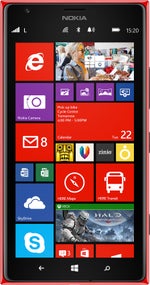
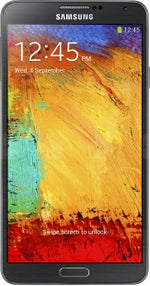
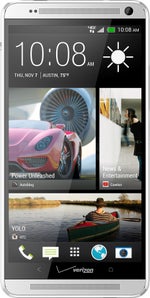
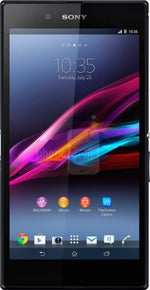





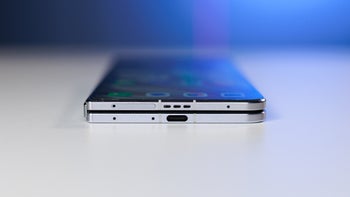
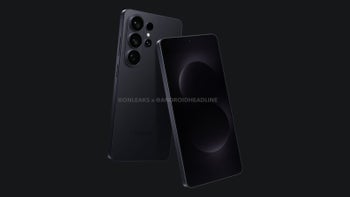
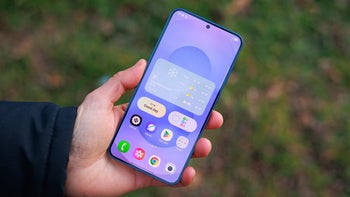
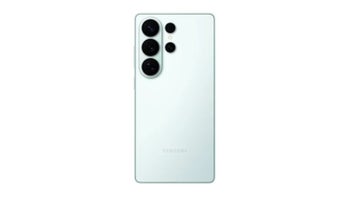
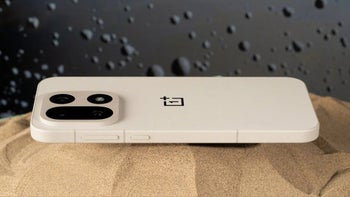
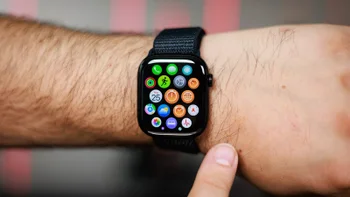
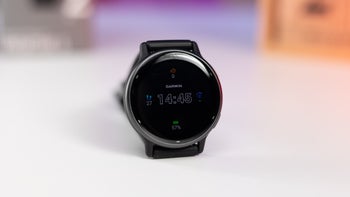
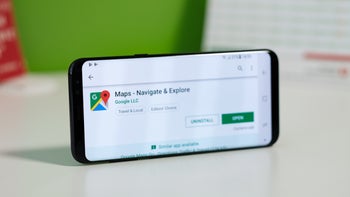
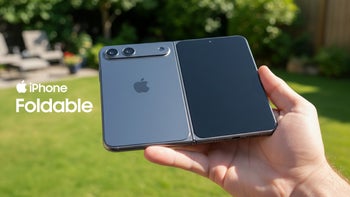
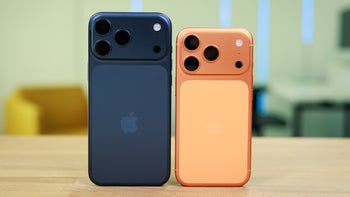
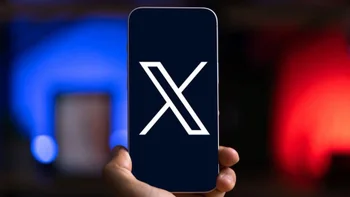
Things that are NOT allowed:
To help keep our community safe and free from spam, we apply temporary limits to newly created accounts: